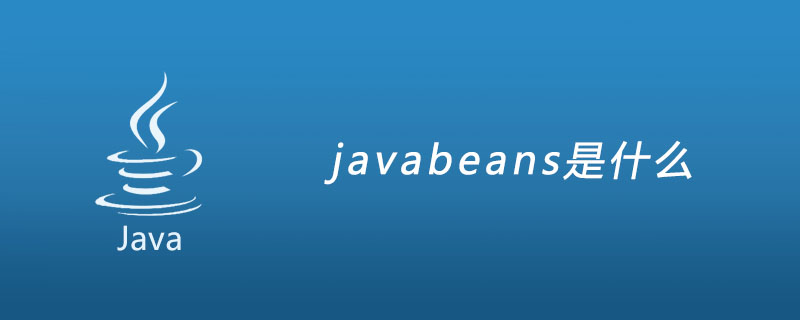Home >Java >javaTutorial >what are javabeans
what are javabeans
- (*-*)浩Original
- 2019-05-27 09:46:235666browse
JavaBeans actually has three meanings. First of all, JavaBeans is a specification, a technical specification for reusable Java components in Java (including JSP), which can also be said to be what we often call an interface.

Secondly, JavaBeans is a Java class. Generally speaking, such a Java class will correspond to an independent .java file. In most cases, this Should be a public type class.
Finally, when a Java class like JavaBeans is instantiated in our specific Java program, this is our object-oriented object. We sometimes call such an instance of JavaBeans JavaBeans. . In short, it is the interface, class and object in Java.
When learning JSP, you will inevitably come into contact with JavaBeans. For a learner without much Java foundation, it is not easy to correctly understand JavaBeans. thing. In this article, we will give an overall introduction to JavaBeans. As such an introduction, we may not cover some technical details.
Introduction
JavaBean is an object-oriented programming interface from Sun Microsystems that allows you to build reusable applications or any mainstream operation in the network The program blocks configured on the system platform are called components. Like Java applets, JavaBeans components (or "Beans") can give Web pages interactive capabilities, such as calculating rates of interest or changing page content based on user or browser characteristics.
From the user's point of view, a component can be a button that you interact with or a small calculation program that starts when you press the button. From a developer's perspective, the button component and the calculator component were created separately, and they can be used together or in different combinations of components in different applications or situations.
When components or Beans are in use, the properties of the Bean (for example, the background color of a window) are visible to other Beans, and Beans that have not been "encountered" before can also be dynamic. understand each other's characteristics and thus interact.
Advantages and Disadvantages
In principle, using JavaBeans is nothing more than using a specific specification to introduce specific classes into Java programs. You can describe and give examples of such Java classes directly in your Java program without using JavaBeans.
Of course, this will undoubtedly reduce the readability of your program, and you will sacrifice the reusable characteristics of the component. But for a simple program in a simple application. You don't have to stick to JavaBeans. Even for JSP, you can make the same choice. We know that in the program segment caused by "", we can use any pure Java statement, including the definition and example of a new object.
As we mentioned earlier, using JavaBeans you can take full advantage of the reusable features of components and increase the readability of your program. As your application grows larger, you will find that the convenience in development and maintenance brought by complying with such specifications is worth the exchange compared to the constraints you are subject to.
The above is the detailed content of what are javabeans. For more information, please follow other related articles on the PHP Chinese website!

